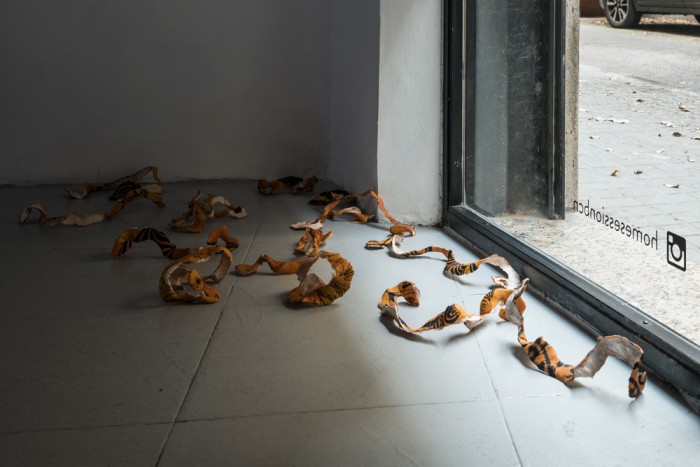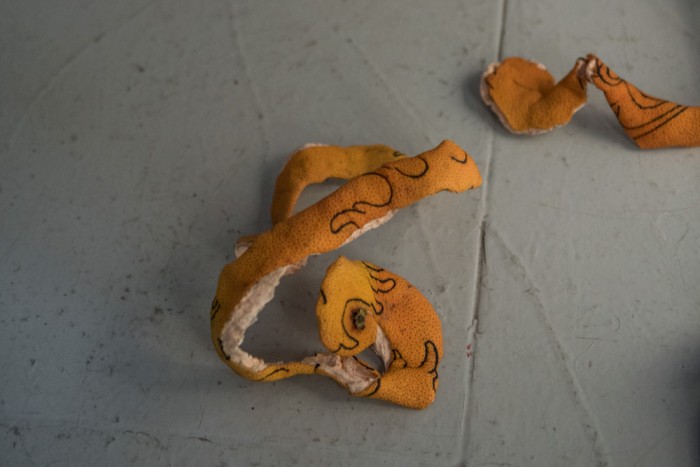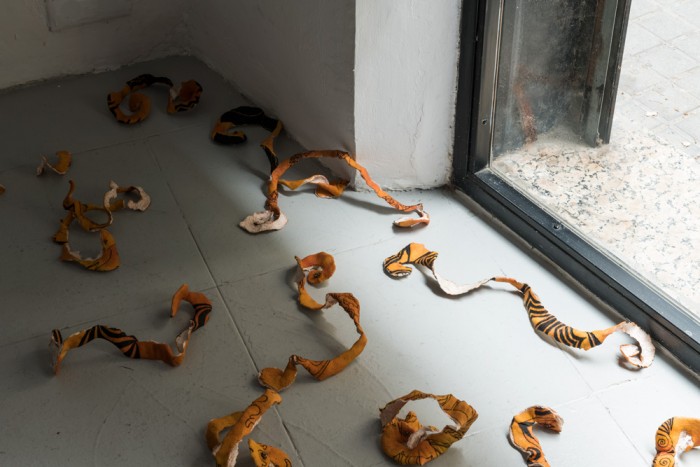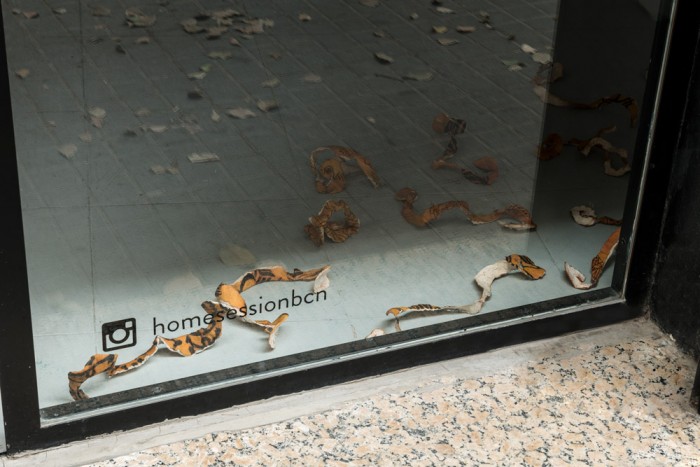Paraíso consumido
Consumed Paradise
Tattoo ink on grapefruit skin (Citrus x Paradisi), variable dimensions, 2019

The back and the hips of Fakir Musafar, Michael Wilson's face, Dan Thome's leg, Jane Handel's collarbone, Leo Zulueta's back, Zapata's leg, Lyle Tuttle's leg, Vaughn's back, Genesis P-Orridge's wrist, Paula P-Orridge's wrist, Hilary Cross' thigh, Greg Kulz's back, Bill Salmon's elbow and arm.
Drawing upon the widespread practice of rehearsing tattooing on fruit skin, the work makes a parallel between the importation of exotic fruits and the appropriation of tribal tattoo patterns in western countries during the eighties. The motives all come from “Modern Primitives”, a 1989 cult issue of the magazine RE/Search (ed. by V. Vale and Andrea Juno, San Francisco) that introduced the body modification movement in the USA to a wider public. They have been reproduced on grapefruits, a hybrid variety accidentally produced by colonial settlers in the Barbados, popularly known during the 18th century as “the forbidden fruit” and scientifically as “Citrus x Paradisi”. While the fruit's name refers to the expulsion from the Garden of Eden, the term coined by the editors of the magazine described a yet underground community eager to reconnect with traditional practices, drawing inspiration from vanishing rituals in idealized parts of the globe (that would soon be consumed by mainstream western culture).




Exhibition view: Solo show "Dehydrating Seaweed Contorsions", Homesession, Barcelona. Photo credit: Roberto Ruiz